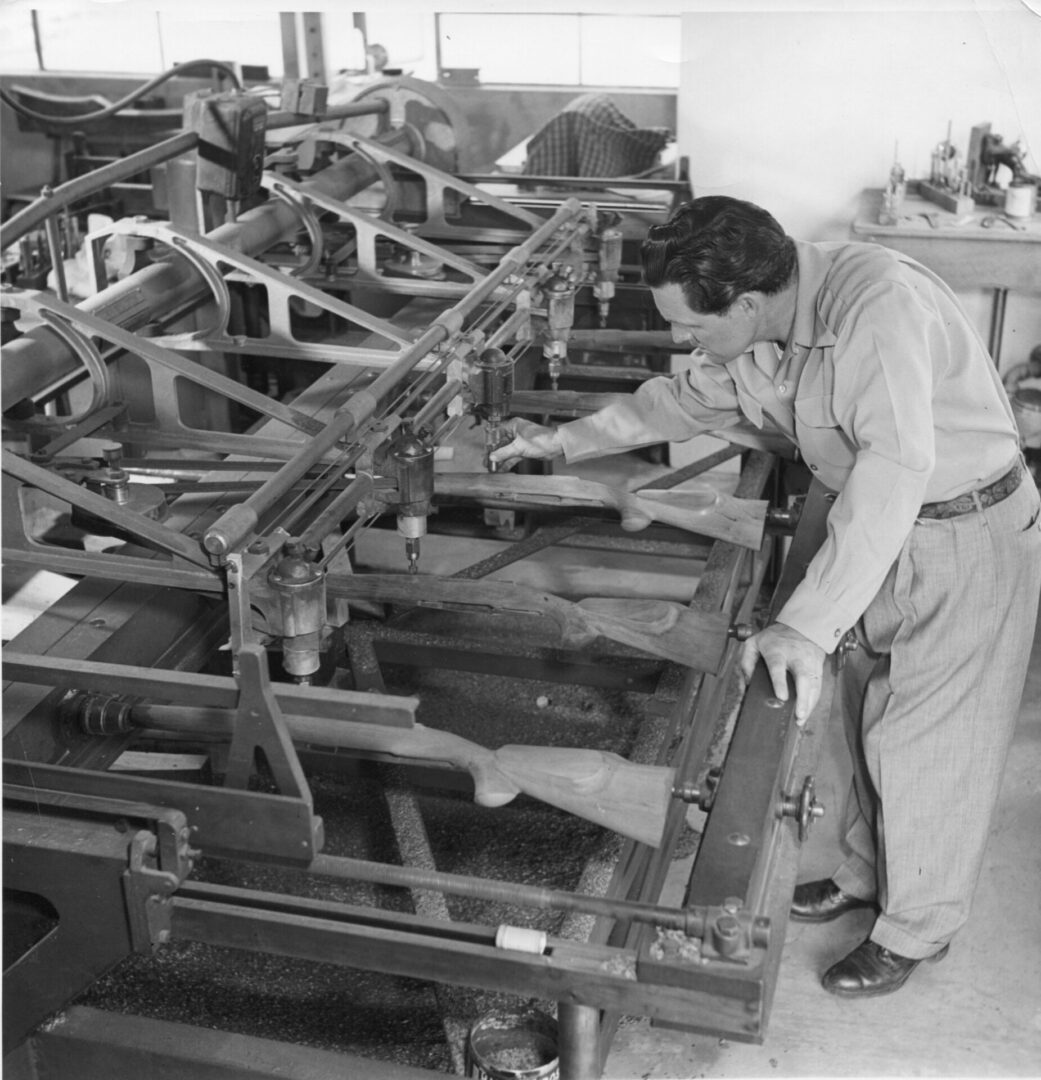From the invention of the gun stock to today, it has gone through changes and improvements – but the basics stay the same. Gun stocks have several pieces of primary anatomy that you can customize based on your shooting style and firearm. If you want to know what the parts of a rifle stock are, look no further.
In this article learn everything you need to know about the anatomy of a rifle stock. Find out what each component and piece of a stock is designed for, and how you can customize it to best suit your needs. And, see how a custom upgrade can improve your shooting accuracy and enjoyment.
The Anatomy of a Gun Stock: Beginners Guide to Knowing Their Rifle
The anatomy of a gun stock stays the same, whether you are a gun collector, shooting enthusiast, or professional gunsmith. The combinations and customizations that are possible, however, produce a slew of rifle stock styles. But, when it all comes down to it, a gun stock has four essential elements: the butt, the comb, the grip, and the fore-end.
The Butt
A gunstock’s main stability point, between the chamber and the shooter, is the butt. The butt is the end-point where recoil is channeled. The shape of the rifle stock butt has changed over the years, but the most iconic is the Kentucky rifle butt.
On a Kentucky rifle, the butt of the gun features a curvature. The intent is to provide a more ergonomic contact point between the recoil force and the shooter. As seen on early Winchester repeaters, these butt plates became notorious for bruising the shooter at the rifle stocks contact point and was eventually phased-out of production.
A curved rifle butt might not be the most practical choice for shooting, but it sure does look good as part of a collection. The curved design of the butt was thin and ergonomic but allowed too much recoil to be directed back at the shooter. When it comes to shooting with a curved butt to the stock, it just isn’t efficacious.
Eventually, gunsmiths adopted a butt design that is closely related to a shotgun stock. Modern rifle stocks leave a wide butt plate to disperse the recoil, and many shooters prefer a rubber buttplate cover to further dampen the muzzle lift. The more surface area for the force to disperse across, the more control a shooter retains while aiming and firing the weapon.
The Comb
The comb of a gun stock is one of the most crucial elements for improved accuracy and handling of the gun. While aiming, the shooter rests their cheek against the comb of the stock, providing an optically stable point from which to aim down the sights. Without this stable point, a shooter would not be able to effectively or accurately aim the rifle.
Rifles from the 19th Century feature dropped combs, which create a recessed divot in front of the stock’s butt. A recessed comb intends to make it easier for shooters to aim while firing from a standing position. Also, a dropped comb reduces the material weight of the firearm, making it easier to carry in times of slogging battles and the hardships of war.
But, the downside of this early comb design was that the shooters often suffered from the violent shock delivered through their jaw and skull every time a round was fired. After the First World War, custom stock makers began to come into their own, and by World War II the raised comb was the more popular option.
By removing the comb material and raising it, you save weight and provide a more stable aiming mechanism while the shooter and/or target is in-motion. The specific aesthetics of a raised comb are individual to the manufacturer. Raised combs may be featured as pancake style, straight line, or rounded at the rear.
The Grip
The grip of a rifle stock is as instrumental as any other component and is different depending on the shooter and the rifle. Straight grips are often called English grips and are the most common grip style on lever-action repeaters, shotguns, and a few bolt-action rifles. A straight grip is good for fast-moving targets, such as is the case when hunting game.
The most popular style of grip, however, is the pistol grip. A pistol grip gun stock offers the most stable grip and precision while shooting. Most shooters prefer the pistol grip because it is comfortable and intuitive while providing optimal aiming precision. Some pistol grip styles are designed with a thumbhole grip, which is ideal for sharpshooters and target shooters.
The Fore-End
The portion of the gun stock which the shooter grips with their non-trigger hand, is the fore-end. The fore-end of the rifle stock serves several purposes. The first purpose is to provide another stable point for the shooter to steady the gun while aiming.
In addition to stabilizing the shot, the fore-end protects the shooter’s hand from the heat generated in the barrel of the gun when discharged, as well as a non-smooth surface for which to grip. Bolt action rifles feature stocks with a fore-end, while other firearms require a separate fore-end piece to be added. The fore-end of the rifle stock also provides a spot on which to mount laser-sights, flashlights, and other accessories.
The fore-end of the stock is designed, either for the shooter to shoot while standing, or resting the rifle on a bench. Benchrest stocks feature a flat fore-end, while others feature a rounded fore-end for gripping. Check out all the options available for your new gun stock by talking to a gun stocks associate, today.
